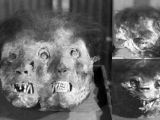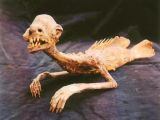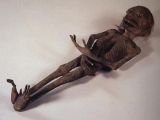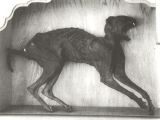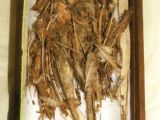Some temples and museums in Japan boast the ownership of several of the most rare relics in the world, namely mummies of demons, imp, raiju, Tengu, Kappa, and other mythical creatures. In fact, some institutions in the northern parts of the country even host “living mummies” of human origin, as in people who have willingly sacrificed their own lives in temples, in rituals lasting more than 5 and a half years to complete. And while some of the mummified remains have been made from parts of other animals, a good deal of them are of yet-unexplained origin, which amplifies their mystery.
For instance, several museums host mermaid mummies, fossils of creatures that closely resemble the depiction that we're so accustomed to – half-fish and half-human creatures that have the ability to sing travelers into submission. But the exhibits of these institutions do not look like charming young girls, but rather like demons from another world. In Edo-period Japan, comedians moving across the country to provide entertainment created the beasts from large fish bones and the upper half of a monkey body. The effect was guaranteed, and the superstitions have endured to this day.
On the other hand, a three-faced demon head mummy, discovered in the early 18th century at the Zengyōji temple, in the city of Kanazawa, Ishikawa prefecture, is of unknown origin, and no clear manufacturing appears on it. Two adjoined faces adorn the front of the skull, while a third one is located at the back, in what looks like something that has come out of a childhood nightmare. Today, the creature is shrined at the temple, and is revered as a sacred being, despite the fact that it made its discoverer sick and that the man only got cured when the mummy was brought to the temple.
Another embalmed body, located at the Hachinohe Museum, the Aomori prefecture, in northern Japan, is also shrouded in mystery. It represents a Tengu, some sort of an air god, a personification that resembles a man and a bird. While the skull is clearly humanoid, it has feathers, and the feet are those of a bird. The artifact originated in the southern parts of the country, but was passed from one family to another until it reached its current location. Some say that the mummy is that of Nambu Nobuyori, a clan leader that ruled vast lands in the mid-18th century, but the claims have yet to be verified.
Some Buddhist temples in the northern regions of Japan house what monks there call “living mummies,” the remains of priests that have sacrificed themselves in order to achieve Nirvana, the enlightenment. Killing yourself is not difficult, but turning into a perfectly-preserved mummy is a real work of art, as evidenced by the fact that only about two dozen monks have managed to do it. The practice of self-mummification was forbidden in Japan around the late 19th century.
The procedure implied the monk to live for 1,000 days on just seeds and nuts, during which time he would engage in strenuous physical exercises, which would strip his body bare of any fat. For the next 1,000 days, he would eat only bark and roots, in ever-decreasing amounts, and also start drinking beverages made from a poisonous tea, boiled in water laden with arsenic. In the end, they would be sealed inside a tomb to die, with only a straw in the roof, to help them breath. If, after a year, the body was undamaged, then the monk would be forever praised and would obtain the rank of Buddha.
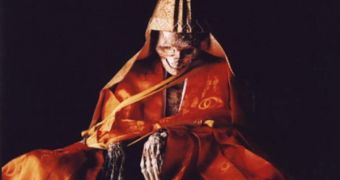
 14 DAY TRIAL //
14 DAY TRIAL // 
